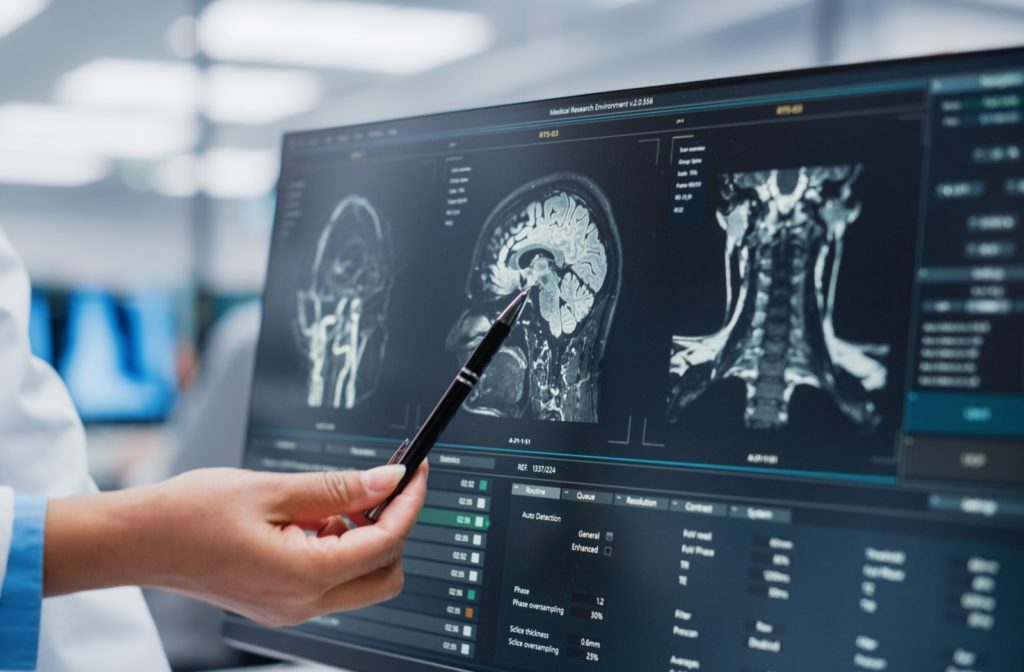Whether you are an athlete pushing your limits on the field or a health enthusiast engaging in high-intensity workouts, protecting your head is crucial. But have you considered how a head injury might impact your vision? Any disruption in this intricate system due to a head injury can lead to vision issues.
This blog explores the connection between head trauma and visual impairment—a topic that is not only relevant but critical for anyone involved in physical activities. If you’ve experienced a head trauma, don’t hesitate to reach out to your eye doctor.
Understanding Head Injuries and Their Impact
Head injuries can range from mild concussions to severe traumatic brain injuries (TBIs). These injuries can result from various incidents, such as falls, sports collisions, or accidents. When the brain sustains an impact, it can affect multiple functions, including vision.
Mild concussions might cause temporary symptoms like headaches and dizziness, while severe TBIs can lead to long-term cognitive impairments, memory loss, or even personality changes. The severity and type of symptoms depend on the location and extent of the injury, making prompt medical attention crucial for anyone who has sustained a head impact.
The Anatomy of Vision
To understand how head injuries can affect your vision, it’s essential to grasp the basics of how vision works. The process of seeing involves several components:
- Eyes: The eyes capture light from the environment and convert it into electrical signals through the retina. The retina contains photoreceptor cells that detect light and color, initiating the visual process.
- Optic Nerves: These electrical signals are transmitted to the brain via the optic nerves. The optic nerves carry the visual information from each eye to the brain, where the signals are combined to create a cohesive image.
- Brain: The brain, particularly the visual cortex located in the occipital lobe, processes these signals to form coherent images. It integrates the information received from the optic nerves, allowing us to perceive and interpret the visual world around us.
Any disruption in this intricate system due to a head injury can lead to vision problems. For instance, damage to the eyes can impair the initial capture of light. Injury to the optic nerves can obstruct the transmission of visual signals.
Additionally, trauma to the brain can affect the processing of these signals, leading to blurred vision, double vision, or even loss of vision. Understanding these components highlights the complexity and vulnerability of our visual system.
Blurred Vision
One of the most common complaints after a head injury is blurred vision. This can occur due to damage to the optic nerve or other parts of the visual pathway. Blurred vision can make it challenging to focus on objects and can affect your overall quality of life.
Double Vision
Double vision, or diplopia, often occurs when the muscles controlling eye movement are affected. This can make it difficult to coordinate your eyes, causing two images to appear instead of one.
Sensitivity to Light
Photophobia, or sensitivity to light, is another issue that many people experience following a head injury. This condition can make it uncomfortable to be in brightly lit environments and can be particularly troublesome for athletes who play outdoor sports.
Visual Field Loss
In some cases, a head injury can cause a loss of peripheral vision. This condition, known as visual field loss, can be dangerous, particularly for athletes who rely on their full field of vision to perform.
Eye Tracking Problems
Difficulty with eye tracking can make tasks like reading or following a moving object challenging. This can significantly impact daily activities and athletic performance.

Why Athletes and Health Enthusiasts Should Be Concerned
High Risk of Head Injuries
Athletes and health enthusiasts are at a higher risk of sustaining head injuries due to the nature of their activities. Sports like football, soccer, and cycling have high incidences of concussions and other head injuries. Recognizing the symptoms of vision impairment can help in seeking timely medical intervention.
Importance of Vision in Sports Performance
Vision plays a crucial role in sports performance. From hand-eye coordination to spatial awareness, good vision is essential for excelling in athletic activities. Any impairment can hinder performance and increase the risk of further injuries.
What to Do If You Experience Vision Problems
Seek Immediate Medical Attention
If you experience any vision problems following a head injury, it is crucial to seek medical attention immediately. An ophthalmologist or neurologist can conduct a thorough examination to determine the extent of the damage.
Follow Up with Specialists
Ongoing care with specialists like neuro-ophthalmologists can help manage and treat vision issues resulting from head trauma. Rehabilitation programs may include vision therapy to improve eye-tracking and coordination.
Protective Measures
Prevention is always better than cure. Wearing appropriate protective gear, such as helmets in contact sports, can significantly reduce the risk of head injuries. Additionally, educating yourself and others about the importance of head safety can make a significant difference.
The Path Towards Maintaining Vision Health
Understanding the potential impact of head injuries on vision is crucial for athletes and health enthusiasts alike. By being aware of the symptoms and seeking timely medical intervention, you can mitigate the risks and continue to engage in your favorite activities safely.
Ready to learn more about how to protect your health and enhance your performance? Book an appointment with one of our eye doctors today!
Stay safe, stay active, and keep your vision clear.


